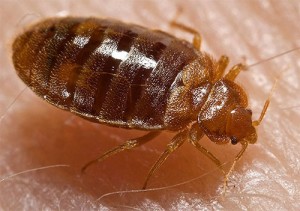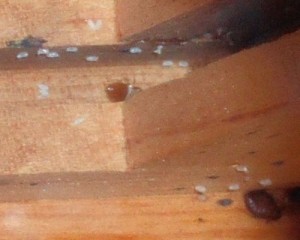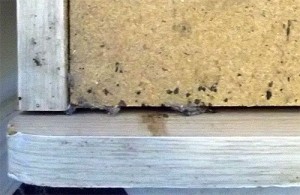Don’t buy bed bugs at the flea market

You might be bringing home a little monster from the flea market. Photo: mwwile, Creative Commons, some rights reserved
Autumn is such a great season, full of colorful leaves, migratory birds, mosquito-free hikes, and of course the fall rummage sale season gets underway.
Back in “the day” you saw more flea markets, but you don’t hear that term so much anymore. No doubt some focus group discovered “flea market” induced much spontaneous itching but little spending. I guess it was possible, if unlikely, to bring home an actual flea with a piece of used furniture. While “rummage sale” is more marketable, there are now concerns about an even worse pest that can hide out in certain pre-owned treasures. In fact, people might get downright nostalgic about fleas now that bed bugs are back.
Although DDT was discovered in the late 1800s, it was not widely used until the 1930s. After World War II its use really took off, and bed bugs disappeared. But so did eagles and ospreys. In addition, it was found to increase rates of cancer and birth defects, and it was banned for most uses in the United States in 1972. Even post-DDT, bed bugs remained off the radar until the late 1990s. Their resurgence in the past fifteen years has taken most people by surprise.

Bed bug nymph alight upon its favorite meal. Photo: public domain
Bed bugs don’t spread disease, but they’ll bite plenty and keep you up at night. Plus they’re just gross. They are not a sign of poor sanitation and are as likely to be found in a Spartan, spotless home as a cluttered one. The difference is they are easier to get rid of in a clean home.
Despite their name, bed bugs are not limited to beds. We all know to be suspicious of a used mattress, but they can hide in any space wide enough to slide the edge of a credit card into. Besides the obvious culprits like plush furniture, other items like wood bed frames and cribs, luggage and backpacks can also harbor these pests.

A cluster of bed bug eggs and two adult bed bugs, from inside a dresser. Photo: KDS444, Creative Commons, some rights reserved
This is not to say you ought to avoid buying these items, but that you should take time to examine them before purchase. Adult bed bugs are very flat in profile, and roughly a quarter-inch long. Nymphs (immature ones) range from 1/16th to 3/16th of an inch. After a feeding, nymphs have been described as “a drop of blood with legs.”
Look closely around piping on cushions and mattresses for brownish-red staining. Their feces look a bit like dots from a fine felt-tip red marker. Check corners and crevices for cast-off skins left behind as they molt. Before carting your rummage-sale find indoors it’s probably a good idea to leave it outside to give it a better inspection than you could at the sale. Bed bugs can live for more than a year between feedings, and can even survive below-zero temperatures as long as it gets cold gradually, so don’t assume an item that was in a barn over the winter is bug-free.

Bed bug feces on the corner of a bed. Photo: Hadifn, Creative Commons, some rights reserved
There are other ways to bring home bed bugs, of course. They can hide in your book bag, suitcase, or purse after visiting hotels, airports, health clubs, laundromats—the list is endless. If you find them in your home, don’t panic and throw away your mattress or furniture—that’s not necessary and will do nothing to end the infestation. Cornell strongly advises working with a pest management professional, even if you want to avoid chemicals. More often than not, the do-it-yourselfer just prolongs the infestation and winds up hiring a pro in the end anyway.
Sadly there is more misinformation about bed bugs than on most other home pests. Since I’ve only scratched (so to speak) the surface of this topic, please go to the U.S. EPA’s site at http://www2.epa.gov/bedbugs or another research-based source for detailed accurate information. You can also contact your local Cornell Cooperative Extension office.
Have fun treasure hunting at the fall rummage sales, and don’t let the you-know-whats bite.
Paul Hetzler is a horticulture and natural resources educator with Cornell Cooperative Extension of St. Lawrence County.





.jpg)


Great article…very creative and instructional!! Catches your attention, and keeps you reading…